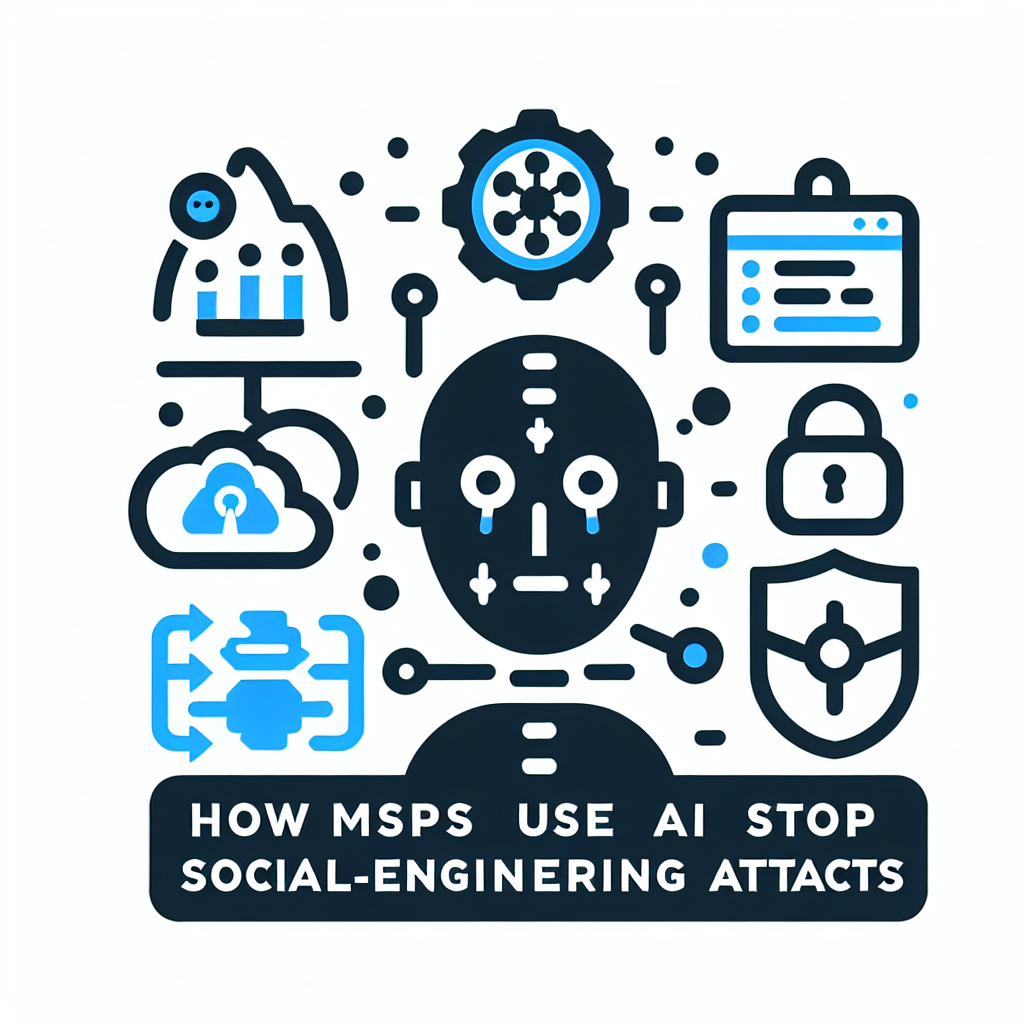
AI is changing how social‑engineering attacks are detected and prevented. MSPs can combine smart simulations, continuous human training, and identity‑aware detection to reduce the risk of phishing and related scams.

They succeed because attackers target human instincts like urgency, trust, and curiosity. Attackers weaponize emotions to prompt quick actions—clicking links, opening attachments, or handing over credentials—often bypassing technical controls. Many incidents start with a simple email or a physical bait that leverages authority or relationships. Because these tactics play on psychology, even well‑protected systems can be compromised if staff act without verification. That’s why human-focused defenses are essential alongside technical tools.
Regular, bite‑sized training is the most effective human control. Short modules delivered frequently keep security behaviors fresh and make learning fit into busy schedules. Gamified elements and rewards boost participation and reinforce positive habits. Training must be followed by practical tests—phishing simulations—to measure improvement and tailor follow‑ups. Encourage a non‑punitive reporting culture so employees share suspicious items without fear.
AI enables simulations that are realistic and personalized at scale. Machine learning can craft emails that mimic common language, sender styles, and targeted themes, increasing the fidelity of tests. This helps spot specific weak points across departments and user roles. AI also automates result analysis, highlighting trends and repeat offenders to guide remediation. Over time, simulations tuned by AI produce better training signals and measurable reductions in click rates.
Prioritize email protection, continuous education, and clear reporting channels. Start with secure email gateways and endpoint detection to block the bulk of attack vectors. Add ongoing micro‑training and frequent, realistic phishing simulations to strengthen behavior. Set up easy channels for users to flag suspicious messages and follow up quickly. Finally, conduct regular reviews of results and iterate on training content and defenses.
Identity‑centric systems link user behavior, training status, and technical alerts into a single view. These platforms show which accounts skipped training, which devices are vulnerable, and where suspicious activity originates. Correlating these signals accelerates response and prioritizes high‑risk users or endpoints. That unified perspective helps MSPs close gaps before attackers exploit them. It also supports targeted coaching for the users who need it most.
Yes—physical tactics like malicious USB drops still work and are often overlooked. Attackers exploit curiosity and perceived goodwill to get people to plug in devices or follow instructions. Physical awareness must be part of the security program, not an afterthought. Teach staff to treat unknown devices and packages with suspicion and report them to IT. Combine this with technical controls—disable autorun and monitor for unusual device activity.
Track metrics such as phishing click rates, report rates, and time to remediate incidents. Reduce in‑phishing click rates and increased user reporting are strong indicators of behavior change. Combine those with technical metrics—blocked attacks, prevented deliveries, and endpoint detections—to show overall risk reduction. Use these numbers in client reviews to demonstrate improvement and justify program costs. Regular dashboards make the impact visible to business stakeholders.
One frequent error is treating training as a checkbox rather than an ongoing program. Another is relying on unrealistic, predictable phishing tests that users learn to ignore. Not closing the loop—failing to act on simulation results or not remediating vulnerable endpoints—is also costly. Avoid punitive practices that discourage reporting; instead, reward vigilance. Finally, don’t ignore non‑email attack vectors like cloud credential leaks and SMS phishing.
Use automated, AI‑assisted platforms that deliver tailored content with minimal administration. Templates and adaptive simulations reduce the manual effort required to run programs across many small clients. Centralized reporting and role‑based views let MSPs manage dozens of clients from a single console. For clients with limited budgets, prioritize high‑impact controls: email security, basic endpoint hygiene, and monthly micro‑training. Offer bundled packages that include automated simulations and reporting to keep costs predictable.
Consistent leadership support and visible practices make cybersecurity a daily habit. Leaders should model good behavior and recognize employees who follow procedures. Integrate security conversations into regular meetings and onboarding so it becomes part of workflows. Make reporting easy and reward proactive behavior to reinforce positive actions. Over time, these small habits create durable cultural change that complements technical defenses.
Run simulations monthly or quarterly depending on client risk and size; frequent tests yield faster behavior change.
No—use them to educate. Punishment reduces reporting and hides real risk.
No—AI scales realism and personalization, but human coaching and follow‑up are still necessary.
Email protection combined with continuous training offers the highest impact for most organizations.
Show clear metrics (reduced click rates, prevented deliveries) and tie them to business risk to secure funding.
Learn more about implementing AI‑driven phishing simulations and continuous awareness programs with Palisade’s services: Palisade's AI‑driven phishing simulations.